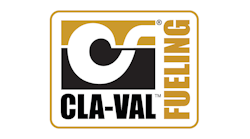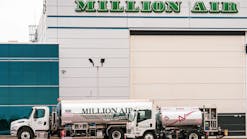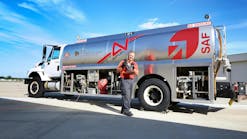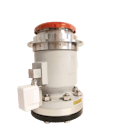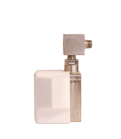Aircraft refueling is, essentially, “the same job world-over,” right? Well, maybe not exactly.
When traveling from country to country, and even more so between continents, it is surprising just how different regional fueling activities can be. What is "so right" for one fueling location is strangely "so wrong" for the next, and the more our team of fueling experts travels the world, the more obvious these global differences become.
Cla-Val Company has a network of offices worldwide, with its global headquarters in the USA and European headquarters in Switzerland. Regional differences between products in several of our business platforms is understood and to be expected.
In aviation ground fueling, it could be assumed that the practice of safely fueling an aircraft would be the same, either at LAX in Los Angeles or GVA in Geneva, for example. However, it may be surprising to find a number of differences. These can be quite varied and go beyond configurations of fueling nozzles or regional preferences.
There are differing global operating policies to consider, subtle nuances in terms of refueling equipment design, operator ergonomics required by federal/state legislation. Probably the biggest difference though is one of the industry culture. So, can our European and American counterparts learn any lessons from each other?
The world of aviation fueling standards is primarily governed by the Joint Inspection Group (JIG) and Airlines for America (A4A). The JIG is historically more focused on Europe, Middle East and Africa (EMEA), while A4A helps to create policies specifically for the US airline industry. While these two organizations work together, and in recent years, huge efforts and large strides have been taken to create truly “global standards” through harmonization, there are inevitably still some differences between policies worldwide.
This means that in some cases, manufacturers will produce a product more suited for the USA, with a very different product required for the exact same task in Europe.
As an example, consider a pit valve and the pilot requirements. The JIG insists on dual air lanyard pilots. They also were the early adopters of the breakaway couplers (EI 1583 3rd Edition). This was only adopted by A4A in 2017 and with enforcement by the end of 2022.
The safe refueling of aircraft is a very skilled job and in Europe many refueling operators and service technicians have made this their lifetime career. Might we suggest that these are the very individuals, with so many years’ experience firmly behind them, who are the real experts in our field of ground refueling equipment? Over the years, this has helped to promote an almost "nurture nature" culture. The very specialist type of refueling equipment we provide is regularly serviced and nurtured throughout the lifetime of the product. As a contrast, refueling professionals are far more transient in the USA, and while the job is no less skilled, refueling operating companies are to be commended for still maintaining such high levels of competence within their fueling teams while maybe not seeing the longevity of personnel in their teams.
This European culture also translates into the health and safety mindset. This has produced many user-driven innovations over the years. Drag rings on fueling nozzles to prevent them from damage and thus prolonging their life. Hydrant coupler lifting devices, commonly known as CLADs, to help relieve fueling operators from continually lifting by hand heavy and fuel laden couplers on and off hydrant pit valves. The now mandated use, within EMEA and for new hydrant systems, of dual air lanyard pilots on hydrant valves. All these are beneficial to the safety of our industry but are yet to be fully adopted worldwide.
When flying into Europe, it is commonplace to see a wide variety of “refuelers” and “hydrant vehicles” driving around the airport aprons, diligently servicing and pumping fuel into every aircraft before it departs.
Some airports can have more than 100 fueling vehicles for this task alone, such are the fueling demands of the modern-day aviation industry, pre-COVID era.
In the USA, at most major airports, static hydrant carts are located at every fueling stand awaiting the arrival of the aircraft before the fueling process begins.
The two strategies could not be more different. On one hand, we have a very expensive fleet of trucks traveling the airport roadways, visiting every aircraft before it departs on its next journey, with all the running and maintenance expense that this truck fleet brings.
In contrast, the smaller and very much lower cost, fueling carts found the in USA will be a permanent fixture at airport parking positions – a clever concept perhaps? Certainly, when you consider the reduced running and maintenance cost this solution offers, not to mention the environmental advantages and reduced carbon footprint that this concept of fueling practice helps to promote. In the post-COVID era, could it be that this fueling cart technology might become more appealing to the European fueling companies as new equipment and maintenance budgets are hard hit in this most ravaged of sectors, international aviation.
In truth, the refueling of aircraft is done so with what would be, by today’s standards, largely antiquated technology. In fact, the modern-day technologies we know and are so used to in our everyday lives have only really been introduced into vehicle designs in the last decade.
As we move away from pen and paper technology, to more touchscreens and cloud-based activities, why should fueling products be any different? The next evolutions and technologies in our field are already upon us, such as Cla-Val’s Ground Fueling E-Manual App, Cla-Val Link2 Asset Management Systems and our future ground fueling product, Smart Technologies.
However, a slight word of caution at this point. Not every region of the world will be ready to embrace new technologies at the same time and so the pace of worldwide introduction is to be carefully considered. New technology requires training and maintenance and in some parts of the world, tried and tested 20th century type technology has proven to be reliable and still works. Financing for upgrades and technical education for training may be limited, which means there will always be a need for a more manual system is some areas.
While strides have been made in the harmonization of standards, there is still quite a few places that the EMEA marketplace and the North American marketplace can learn from each other regarding equipment, operator ergonomics and technology.
Richard Hooton, Cla-Val ground fueling market manager – EMEA, brings more than 25 years of experience in the aviation industry, working closely with the industry's leading brands within the ground fueling and fuel filtration market sectors. He has a proficient knowledge and understanding of aircraft ground refueling equipment and aviation fuel filtration systems with proven sales experience and success internationally, now helping to drive the Cla-Val sales and marketing strategy within the EMEA aviation sector.


